| The flamingos seemed to be in an area without fencing or netting
above. I wondered why they never flew away. But then perhaps they know when
they are well off. These Caribbean flamingos don't fully acquire their wonderful colour until
they are three years old. There was another group of slightly smaller and
paler birds
which were lesser flamingos from Africa. | 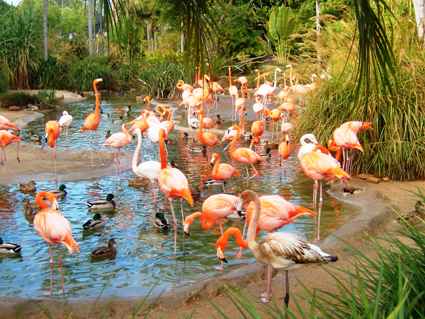 |
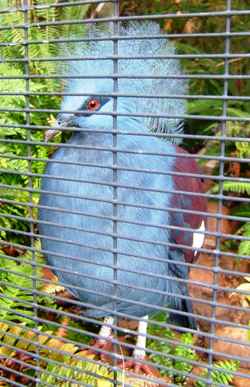 | Photographing birds
is a real challenge, particularly when most are in cages with fine
wire bars such as this one. This is quite a large bird and the crest makes
it look even larger. It is a blue crowned pigeon. |
| These are horned parakeets. We couldn't actually see the horns
on their head from this angle. The cage bars here are so close to the camera that
they are out of focus. | 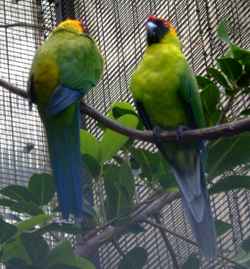 |
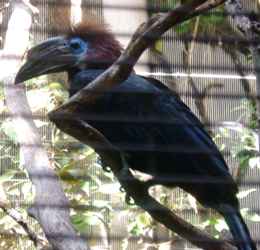 | Most of the birds
are classed as vulnerable and the zoo is actively trying to breed many
varieties. This one is called a black casqued hornbill. |
| Each cage could have several varieties presnt and sometimes it
was a real challenge to spot them. This white headed wattled lapwing was
larger than most and easier to spot. | 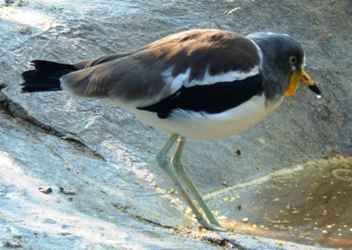 |
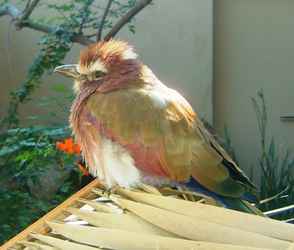 | Sometimes you just
got lucky as with this purple roller who just posed in exactly the right
spot for us. |
| Some birds are just plain ugly. This maribou stork was sitting
down (I think). Its partner was 'stalking' around the enclosure looking just
like an absent minded professor. They produce beautiful fathers which have
been really sought after at times by the hat producers, but they sure are UGLY! | 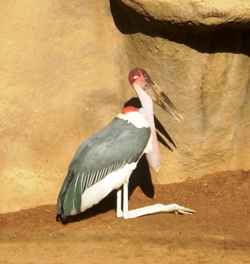 |
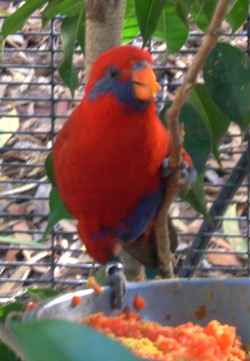 | Anyone for jelly and
custard? This parakeet was tucking in. I kept photographing its back as it
ate, but eventually it turned round for me. |
| Lots of the birds are very bright and cheerful, as with this
yellow breasted starling - a bit different from the starlings we are used to
seeing. The birds
are looked after by a team of 26 people. | 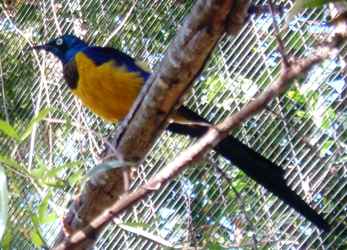 |
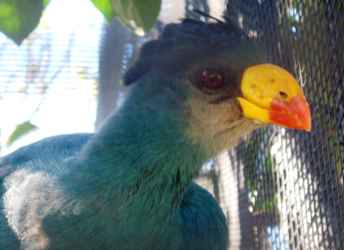 | There are birds as
small as humming birds which never stay still long enough to photograph
through to birds so large you can't get far enough away to get them all
in. |
| Most birds are quite slim in outline but some (at least) look much fatter.
This may have been a woodpecker. | 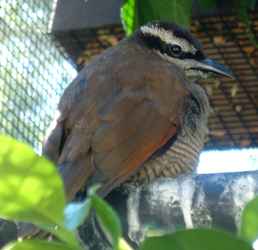 |
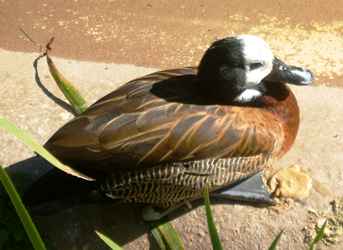 | Birds too belong to
many different families. The zoo has quite a collection of water birds such as
this very attractive duck. |
| Then there are the waders some of which have huge feet. These are
mainly displayed
in the Scripps Aviary (named after the organisation which had sponsored it).
The 'building' is an enormous cage and the birds are free to roam or fly
anywhere within it, round and above the visitors who can walk through or
even sit and watch them. Again, it can be quite a challenge to spot some of
the species, but we were lucky enough to see this one... | 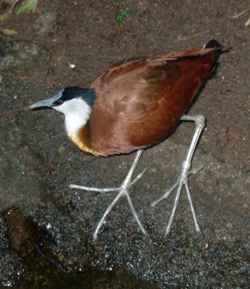 |
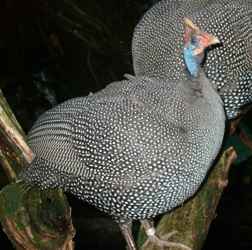 | these spotted guinea
fowl which are more the size of a small turkey... |
| and this scary looking black one which had just been fed with small white mice, so if you are sqeamish look away now. | 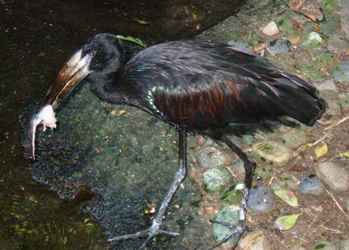 |
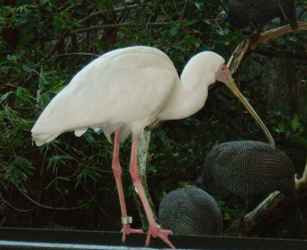 | This is a spoonbill with its very distinctive spoon shaped beak.
As you walk through the aviary you can get quite close to them. |
| There are about two dozen varieties of birds in this aviary,
the waders being the larger ones which stay more on the ground and the other
varieties being smaller and hiding up in the tree tops. | 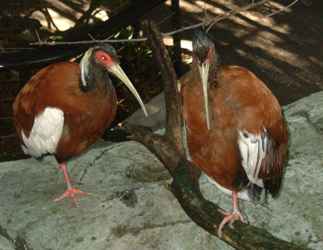 |
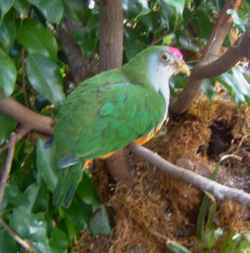 | Sometimes it becomes
impossible to work out which bird is which even with the descriptions. You
just end up admiring the colours. |
| The zoo has a few of the really big birds, such as this Andean
condor, which live in huge cages. Some of the
Californian condors have been bred as part of a program to reintroduce them
into the wild. | 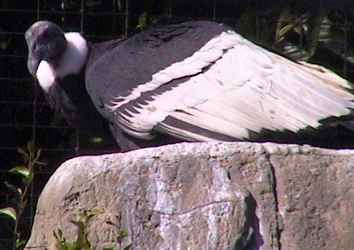 |
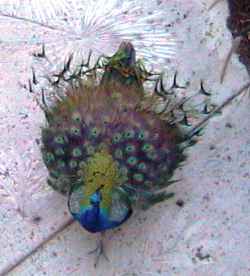 | And just wandering
around the grounds are a number of peacocks. This one had given a full
display but I just missed it. |
|